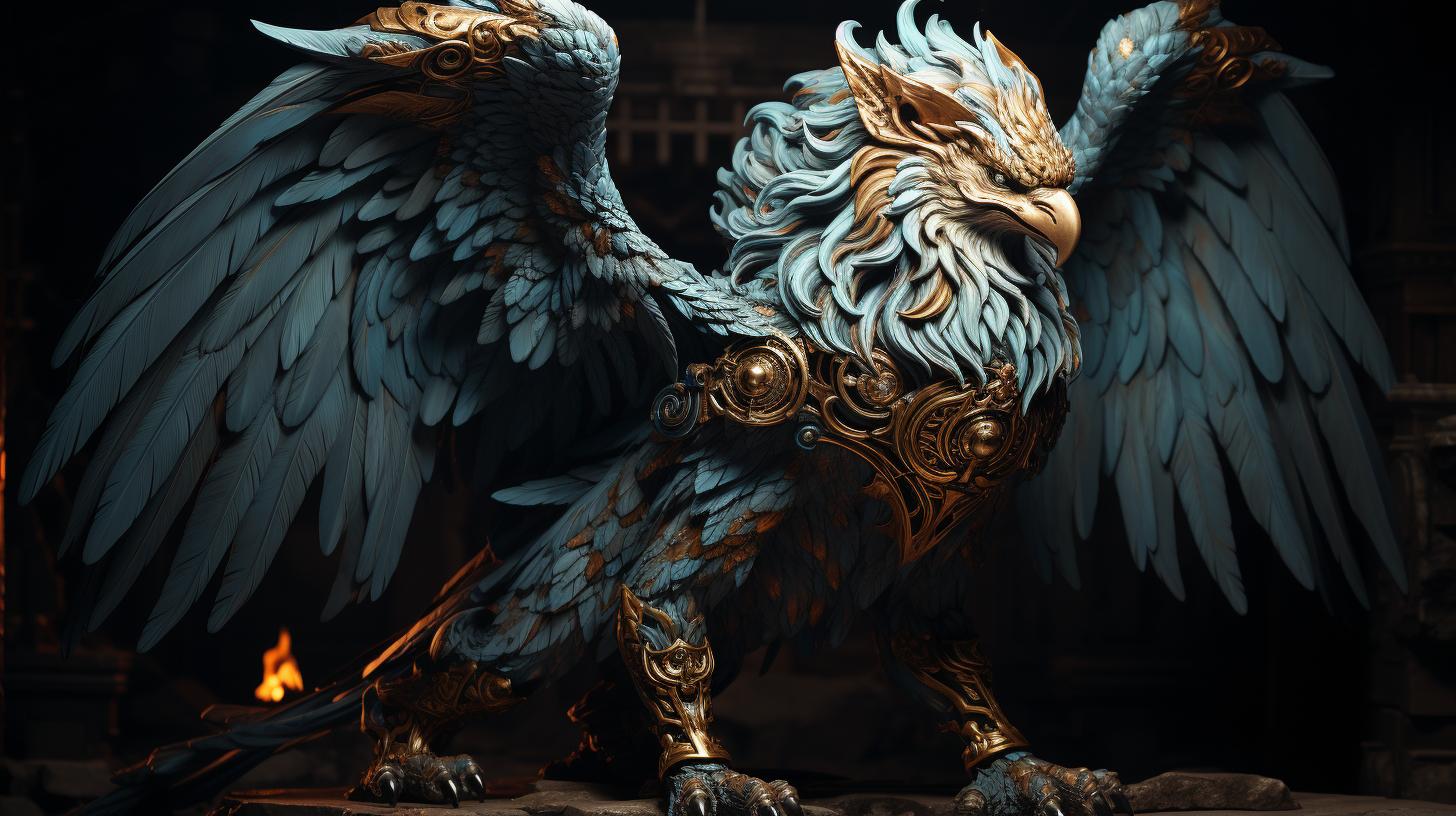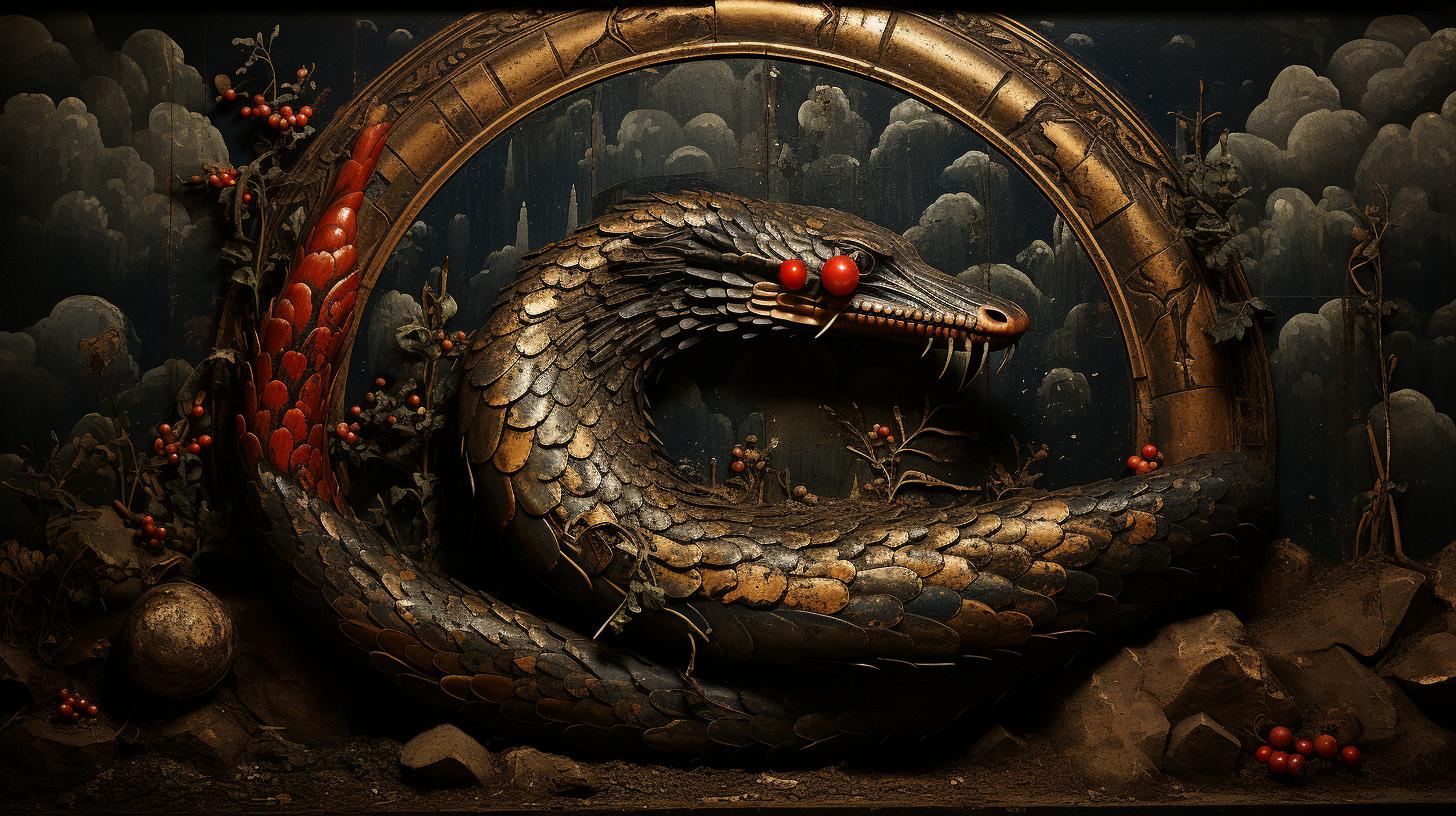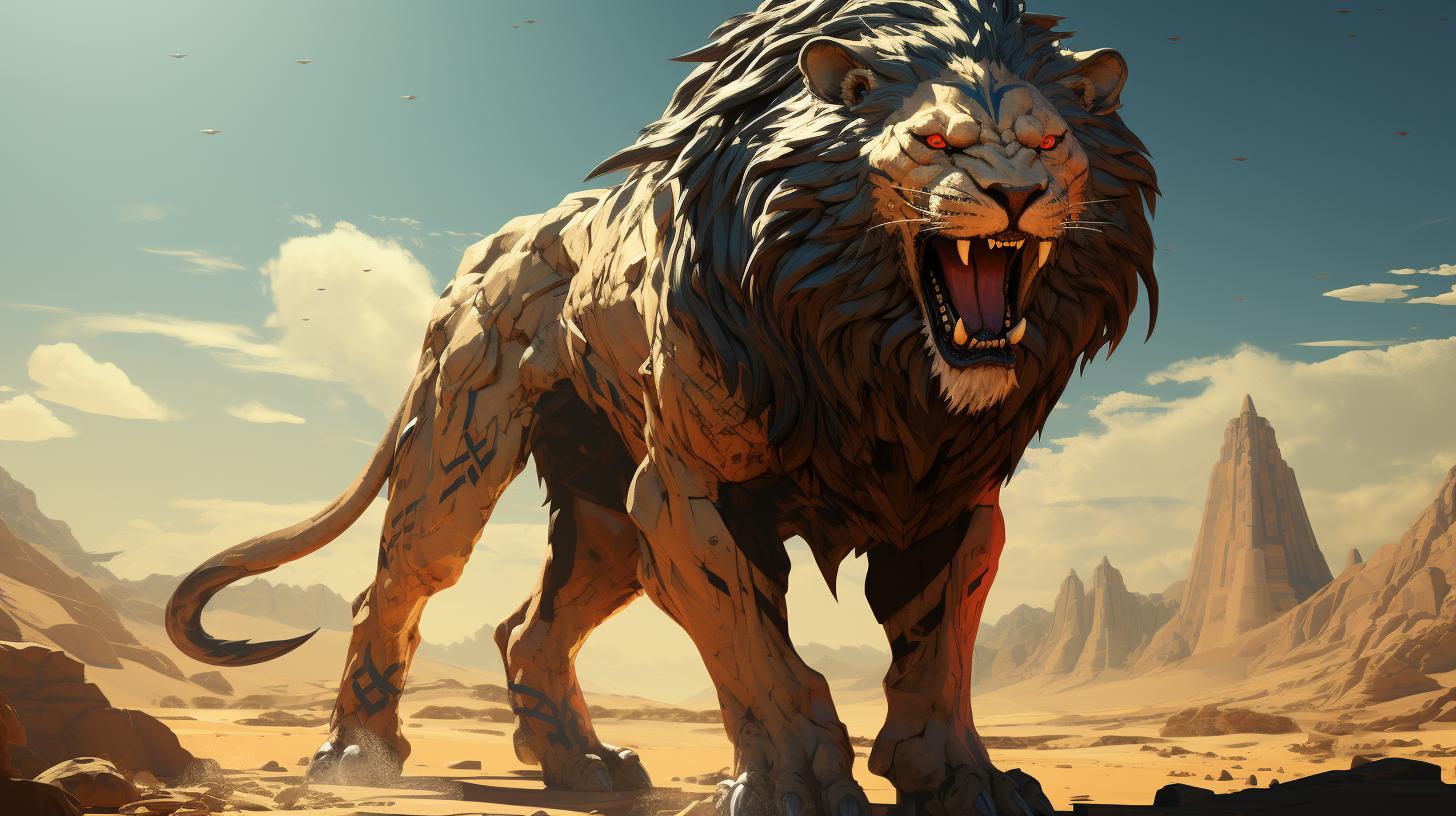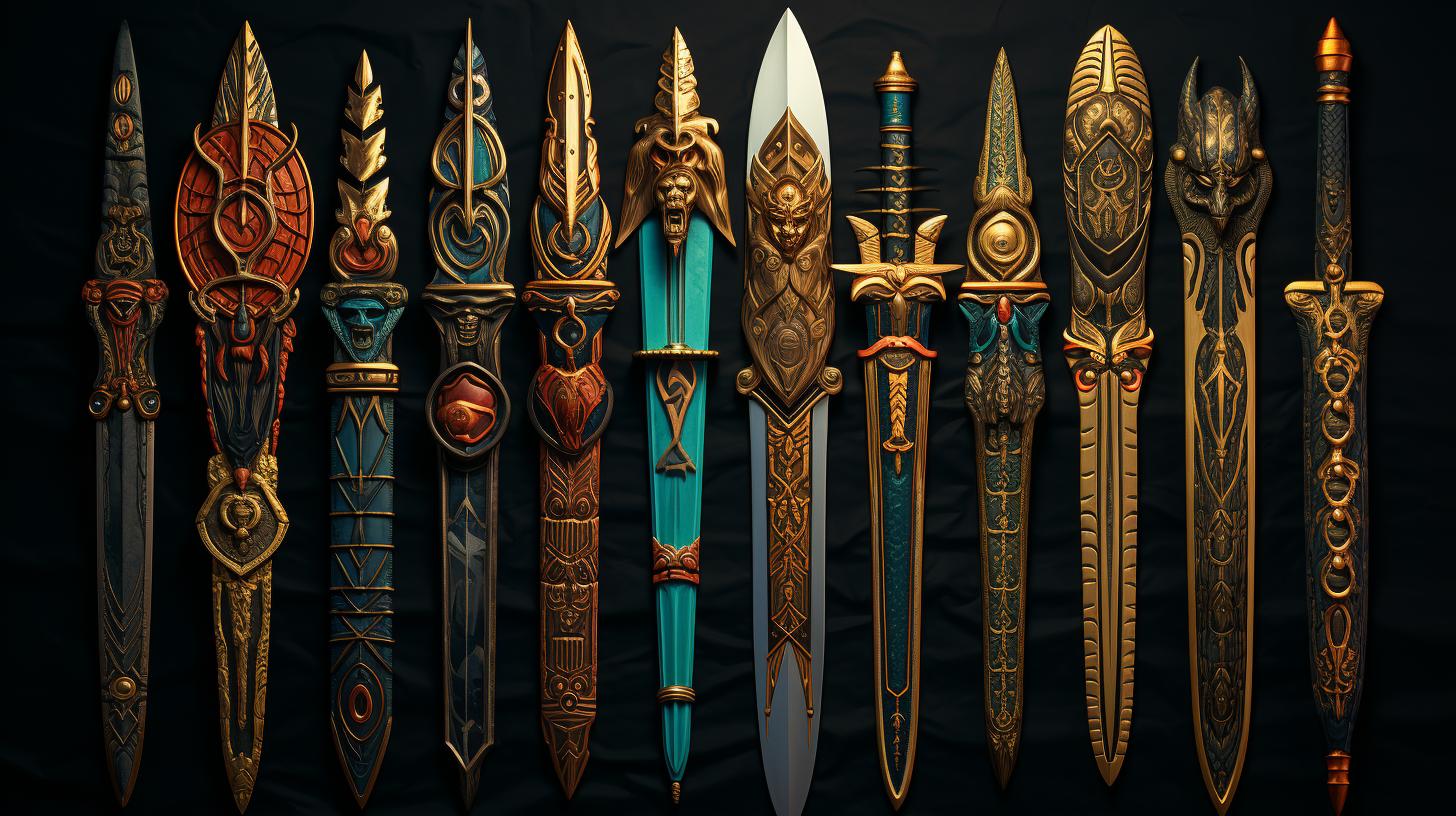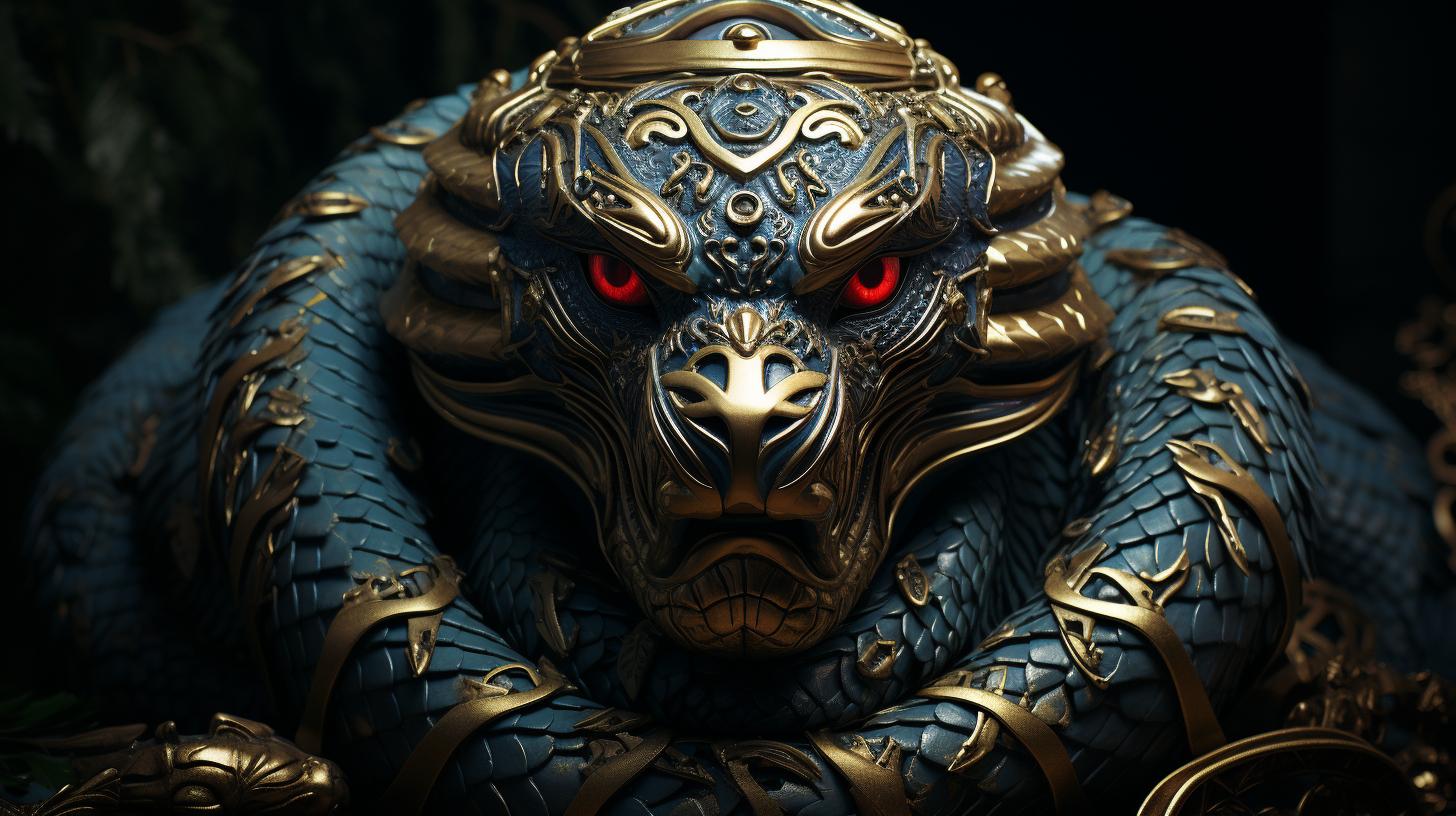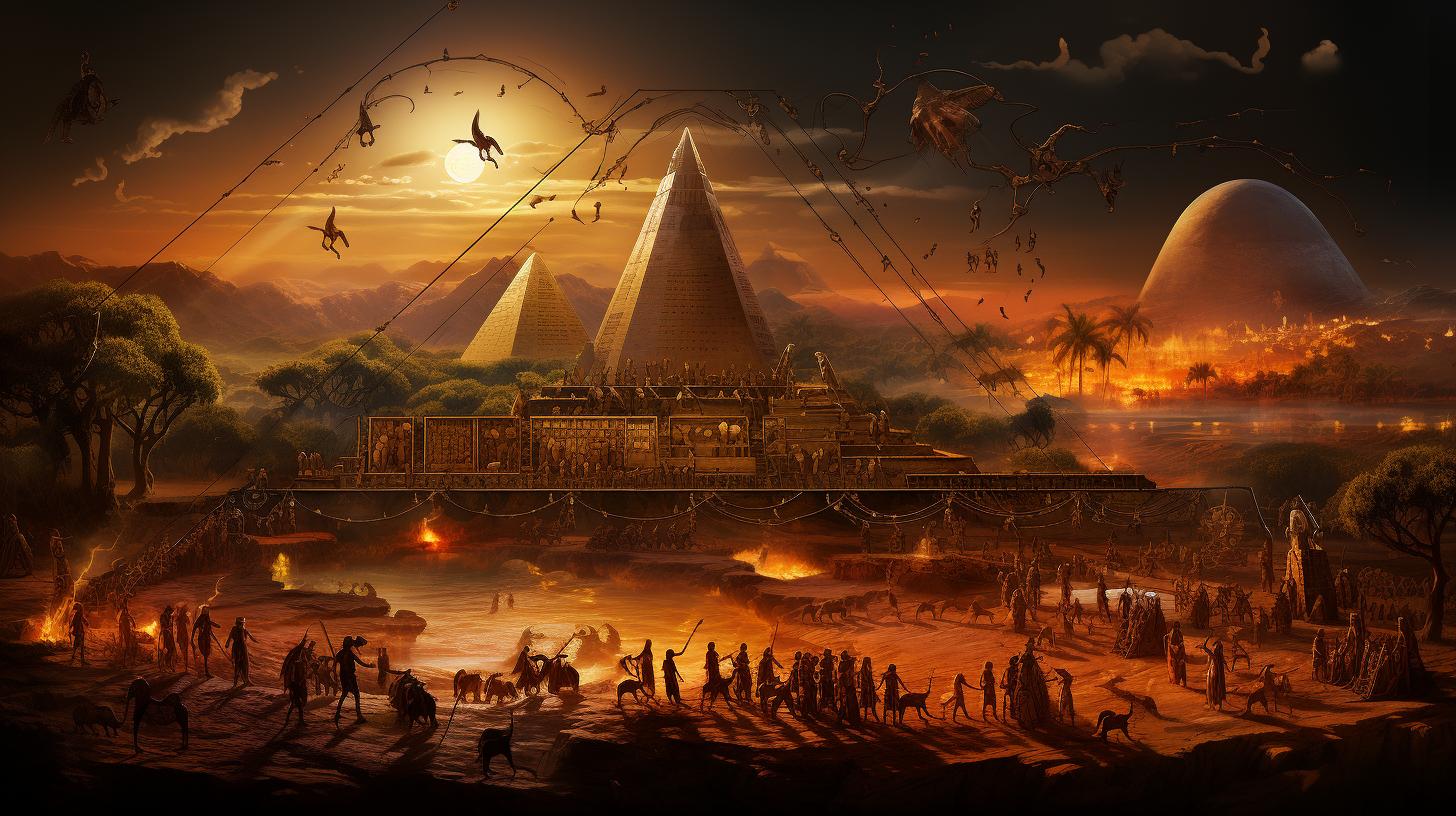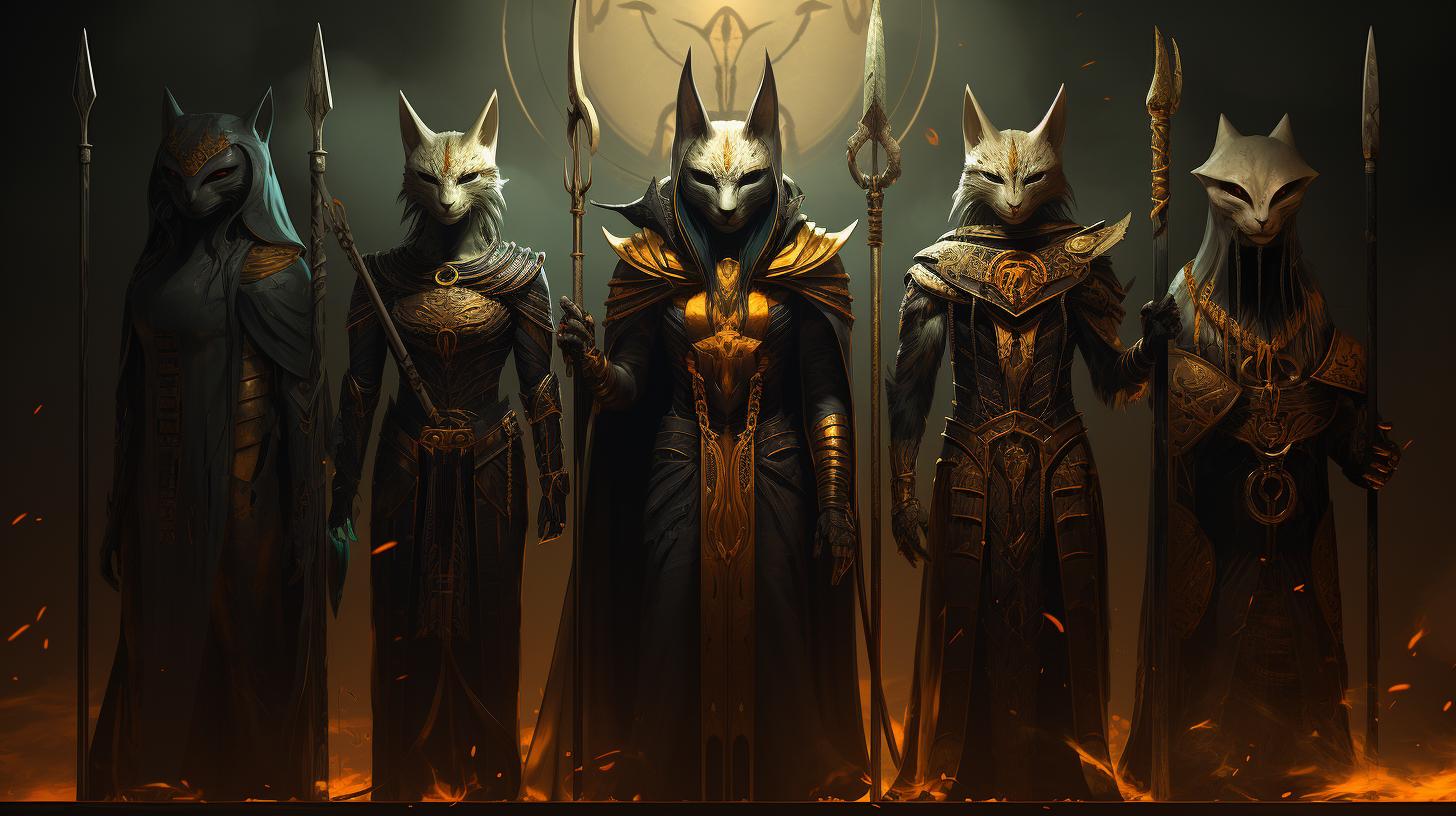List of Egyptian Gods With Animal Heads: Uncovering the Mythical Deities of Ancient Egypt
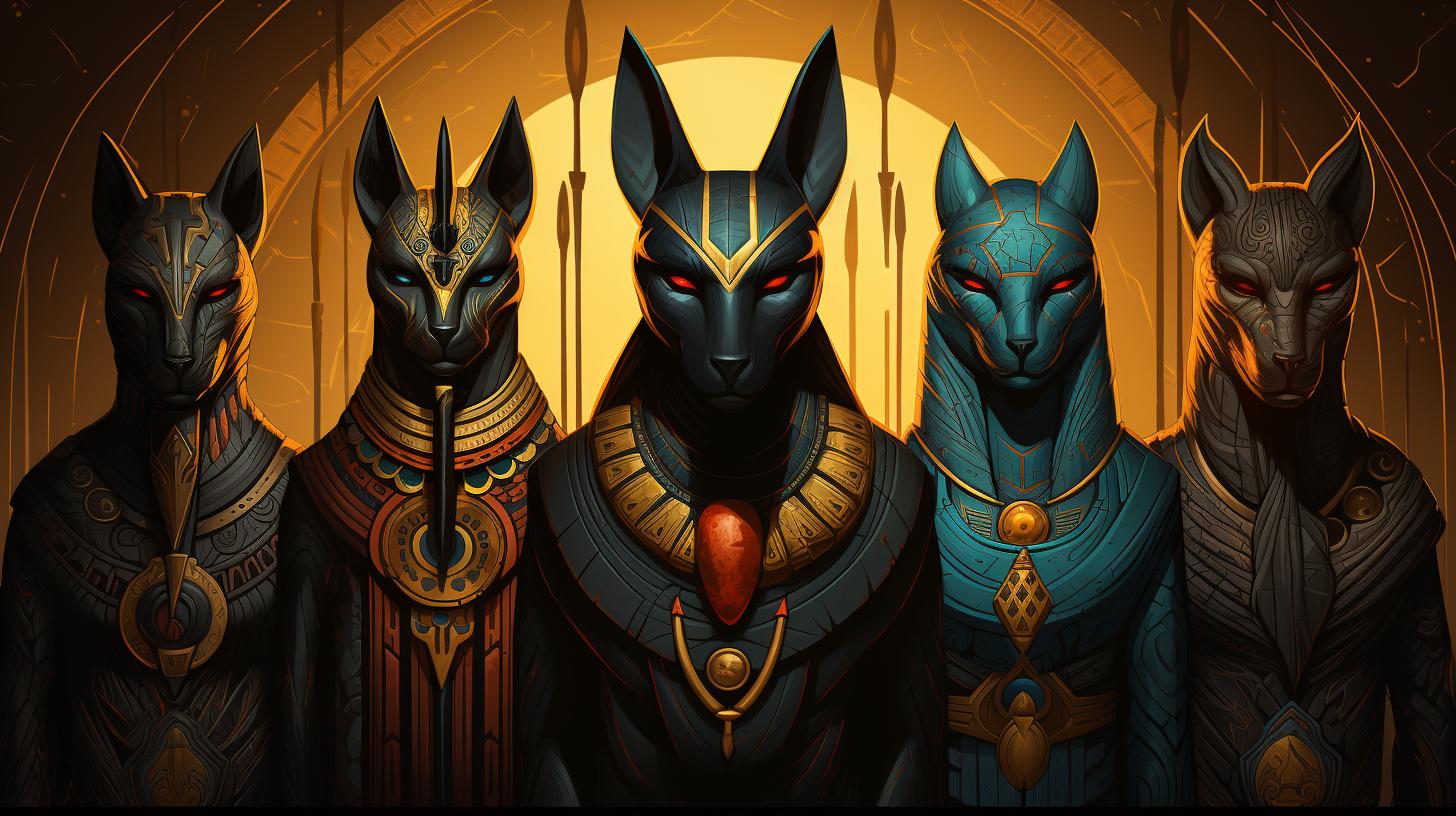
The Egyptian civilization worshipped a pantheon of gods, many of whom had animal heads. These deities held significant roles in ancient Egyptian mythology and religion. They were seen as manifestations of the gods themselves, revered and symbolically representative of various aspects of life.
This article provides an overview of the list of Egyptian gods with animal heads, delving into their symbolism, myths, and importance within Egyptian culture. Let’s explore the intriguing world of these divine beings and their unique representations.
Overview of Ancient Egyptian Mythology and Religion
Beliefs and Practices of Ancient Egyptians
The ancient Egyptians had a complex and intricate belief system that revolved around the concept of cosmology and the divine order. They believed in the existence of multiple gods and goddesses who governed different aspects of life and the natural world.
The Egyptians viewed their pharaohs as divine rulers, serving as a conduit between the gods and the people. Religious rituals and practices were an integral part of everyday life, offering a means of communication with the divine beings.
The ancient Egyptians believed in an afterlife, where the soul would continue to exist in the Duat, a realm of the dead. To ensure a successful journey to the afterlife, the deceased underwent mummification and elaborate funerary rituals.
The belief in life after death was intertwined with the concepts of judgment and the weighing of the heart ceremony, where the heart was compared to the feather of Ma’at, the goddess of truth and justice.
Importance of Animals in Egyptian Mythology
Animals held immense significance in Egyptian mythology and were seen as interconnected with the divine realm. Certain animals were associated with specific gods and goddesses, embodying their characteristics, powers, and symbols.
The Egyptians believed that animals possessed a sacred essence and were capable of housing the spirits of gods and goddesses. Consequently, they revered certain animals as living manifestations of the divine.
Animals were frequently depicted in ancient Egyptian art, often with human bodies and animal heads, representing various deities. The choice of animal head reflected the specific attributes and domains of each god or goddess.
For example, the falcon-headed Horus symbolized the sky and kingship, while the jackal-headed Anubis was associated with death and embalming. This fusion of human and animal forms in religious iconography exemplified the Egyptians’ deep reverence for both animals and gods.
Animals also played a role in religious practices, as they were bred, sacrificed, and mummified as offerings to the gods. These mummified animals, such as cats, ibises, and falcons, were available for purchase by pilgrims visiting temples.
The faithful believed that offering these animal mummies to the gods would grant them favor and answer their prayers.
In conclusion, ancient Egyptian mythology and religion encompassed a complex belief system centered around gods and goddesses, rituals, and the veneration of animals.
The Egyptians held a deep reverence for animals, believing in their connection to the divine and recognizing their significance as representations of gods and goddesses. This amalgamation of human and animal forms in religious practices and iconography was a reflection of their profound spiritual beliefs and cultural values.
Significance of Animal-Headed Gods in Egyptian Culture
Animal-headed gods held great significance in the rich tapestry of ancient Egyptian culture, representing a unique and powerful aspect of their mythology. This section explores two key aspects: the concept of divine manifestation in animal forms and the symbolism and representations associated with these fascinating deities.
Concept of Divine Manifestation in Animal Forms
Egyptian culture believed in the idea of gods choosing to manifest themselves in animal forms, as a tangible representation of their divine presence. This concept was deeply rooted in the belief that animals embodied qualities and characteristics associated with specific deities.
Through these animal manifestations, the gods’ power and influence permeated the world, elevating both the role of animals and the reverence for the gods themselves.
Symbolism and Representations of Animal-Headed Gods
The symbolism tied to animal-headed gods was intricate and multi-layered.
Each animal represented specific attributes and domains, aligning with the god it personified. The falcon-headed Horus symbolized royal power and protection, while the cat-headed Bastet represented fertility and home.
The jackal-headed Anubis embodied death and embalming, whereas the ibis-headed Thoth stood as the god of wisdom and writing.
The animal-headed gods were depicted in intricate artwork and statues, often blending human and animal features.
These representations embodied the seamless connection between the divine and the earthly realms, emphasizing the gods’ unique ability to traverse and influence both realms.
- Horus: The falcon-headed god associated with the sky and kingship.
- Bastet: The cat-headed goddess revered for fertility and domesticity.
- Anubis: The jackal-headed guardian of the dead and embalming.
- Thoth: The ibis-headed god representing wisdom and writing.
These animal-headed deities, along with others not mentioned here, played vital roles in Egyptian culture, guiding and influencing various aspects of life.
List of Egyptian Gods With Animal Heads
Horus: The Falcon-Headed God of Sky and Kingship
Horus, depicted with the head of a falcon, held a prominent position in Egyptian mythology as the god of the sky and kingship. He symbolized divine kingship and played a vital role in the protection of the pharaoh.
Horus was believed to be the son of Osiris and Isis, and his falcon-headed representation portrayed his connection with the celestial realm. As a powerful deity, Horus was associated with the sun and was worshipped for his role in maintaining order and justice in the kingdom.
Bastet: The Cat-Headed Goddess of Home and Fertility
Bastet, often depicted with the head of a lioness or domestic cat, held a significant position as the goddess of home and fertility. Considered a protective deity, she was worshipped for safeguarding homes, families, and the pharaoh.
Bastet was also associated with music, joy, and love. Her feline-headed representation symbolized her fierce and nurturing attributes, as well as her role in defending against evil and promoting harmony and prosperity.
Anubis: The Jackal-Headed God of Death and Embalming
Anubis, with the head of a jackal, played a crucial role in Egyptian culture as the god of death and embalming. Regarded as the protector of the deceased, he guided souls through the afterlife and oversaw the embalming and mummification processes.
Anubis’ jackal-headed depiction represented his association with funerary rituals and his role in ensuring a successful journey to the afterlife. Worship of Anubis was integral to the beliefs and practices surrounding death and the preservation of the physical body.
Thoth: The Ibis-Headed God of Wisdom and Writing
Thoth, depicted with the head of an ibis bird, held immense significance in Egyptian mythology as the god of wisdom, writing, and knowledge. He was credited with inventing writing, mathematics, and magic.
Thoth played a vital role as a mediator and scribe among the gods. His ibis-headed representation symbolized his association with intellect, science, and communication. Thoth was venerated for his ability to maintain cosmic order and promote a harmonious society through the power of knowledge and wisdom.
Sobek: The Crocodile-Headed God of Nile and Fertility
Sobek, portrayed with the head of a crocodile, was an essential deity in ancient Egyptian culture, representing the Nile River and fertility. He was revered for his connection with the life-sustaining waters, fertility of the land, and overall prosperity.
Sobek’s crocodile-headed depiction symbolized his association with the dangerous and powerful nature of the Nile. Worshipped as both a protective force and a provider of abundance, Sobek played a crucial role in agricultural and religious practices along the Nile.
Ra: The Falcon-Headed God of Sun and Creation
Ra, often depicted with the head of a falcon or as a falcon itself, occupied a prominent place as the god of the sun and creation in Egyptian mythology. He was considered the bringer of light, warmth, and life.
Ra’s falcon-headed representation signified his celestial power and his role as the sun god. Worshipped as the creator of the world and the ruler of the cosmos, Ra played a crucial role in sustaining and renewing life on Earth.
Hathor: The Cow-Headed Goddess of Love and Joy
Hathor, with the head of a cow or a woman with cow-like features, held an essential role as the goddess of love, joy, and motherhood. She was associated with music, dance, fertility, and feminine beauty.
Hathor’s cow-headed depiction symbolized her nurturing and protective attributes, as well as her connection to the sacred cow, which represented abundance and the life-giving powers of the earth. Worship of Hathor encompassed celebrations, music, and festivities, promoting happiness and love among worshipers.
Set: The Jackal-Headed God of Chaos and Battle
Set, depicted with the head of a jackal or an unidentified animal, was a complex deity associated with chaos, storms, and deserts. Known as the god of war and conflict, Set symbolized the triumph of order over chaos.
His jackal-headed representation demonstrated his connection to the wild and unpredictable forces of the natural world. Despite being considered a disruptive force, Set played a crucial role in maintaining balance and stimulating growth and renewal.
This section provides an overview of Egyptian gods with animal heads, highlighting their unique roles, symbolism, and significance in ancient Egyptian culture. Each deity’s animal-headed representation carried specific meanings and associations, reflecting their diverse spheres of influence and impact on the lives of the ancient Egyptians.
Roles and Myths Associated with Egyptian Animal-Headed Gods
The animal-headed gods in ancient Egyptian mythology played significant roles and were associated with various myths. They encompassed diverse aspects of creation, interaction, and relationships among deities. Exploring their roles and myths provides a deeper understanding of the Egyptian pantheon.
Creation Myth and the Role of Animal-Headed Gods
In the creation myth of ancient Egypt, animal-headed gods played crucial roles in shaping the world and its inhabitants. They represented different forces and elements in the cosmic order. For example, one interpretation states that the lion-headed goddess Sekhmet was responsible for maintaining balance and order, while other deities like Thoth, with his ibis head, played roles in the act of creation and maintaining wisdom.
Stories of Gods and Their Animal Avatars
Within Egyptian mythology, there were numerous tales recounting the adventures and exploits of gods with animal heads. These stories often showcased the powers and abilities associated with their animal avatars. An example is the story of Horus, depicted as a falcon-headed god, who sought justice and vengeance against his uncle Set, symbolized by a jackal-headed deity.
These myths served to educate and entertain, emphasizing the importance of each god’s animal form and its influence.
Interactions and Relationships Among Animal-Headed Gods
The Egyptian pantheon featured intricate relationships and interactions among the animal-headed gods. They worked together, competed, and sometimes even clashed in battles representing opposing cosmic forces. The relationships symbolized dualities such as life and death, light and darkness, maintaining harmony within the Egyptian worldview.
For instance, the god Anubis, with his jackal head, played a significant role in guiding souls through the afterlife, while simultaneously assisting other deities in their divine duties.
By exploring the roles and myths associated with animal-headed gods in Egyptian culture, we gain insights into the complex nature of their divine hierarchy and the cultural significance they held within ancient Egyptian society.
Understanding these stories and relationships provides a window into the beliefs, rituals, and worldview of the Egyptian civilization.
Ancient Egyptian Temples and Cults Devoted to Animal-Headed Gods
Ancient Egyptian temples served as sacred sites dedicated to the worship of animal-headed gods. These magnificent structures held significant religious and cultural importance, attracting devotees from across the kingdom. The practices carried out within these temples allowed believers to connect with the divine and seek blessings from their chosen deities.
Sacred Sites and Worship Practices
Ancient Egyptians built temples throughout the land, each dedicated to a specific animal-headed god. These sacred sites became focal points for religious gatherings, rituals, and ceremonies. Priests, chosen for their purity and knowledge, oversaw the worship practices within these temples.
Worshipers approached the temples with utmost reverence and devotion, participating in rituals such as purification baths, prayers, and offerings. These practices aimed to establish a spiritual connection with the animal-headed gods, seeking their guidance, protection, and favor.
Animal Mummification and Offerings
In Egyptian temples, animals associated with specific deities were bred and raised in designated farms. These animals, including cats, ibises, and falcons, were revered as sacred manifestations of the gods. Upon their natural passing, they were mummified and prepared as offerings.
The practice of animal mummification involved carefully preserving the remains and adorning them with intricate wrappings. Mummified animals were then made available for purchase by pilgrims visiting the temples. Devotees believed these offerings, presented to the animal-headed gods, would grant their prayers and wishes.
Pilgrimages and Practices in Temples
Ancient Egyptians embarked on pilgrimages to these temples, undertaking arduous journeys to express their devotion and seek divine favor. Pilgrims arrived with offerings, often carrying mummified animals or other dedicated items, symbolizing their reverence.
Within the temple grounds, pilgrims engaged in various practices, including recitals of prayers, prostrations, and meditations. They sought counsel from priests who acted as intermediaries between the worshipers and the animal-headed gods, offering guidance and performing rituals on their behalf.
These temple practices fostered a sense of community, uniting believers in their shared faith and dedication to the animal-headed gods. The rituals performed within the temples served not only as a means of worship but also as a way to strengthen social bonds and reinforce cultural identity.
- Pilgrimages allowed believers to embark on spiritual quests, deepening their connection with the divine.
- Animal mummification and offerings symbolized devotion and the desire for divine intervention.
- Temple rituals served as a communal experience, strengthening religious ties within the community.
These ancient Egyptian temples and cults devoted to animal-headed gods served as vibrant centers of religious activity, offering worshipers a place to commune with the divine, seek solace, and find spiritual guidance.
The practices and beliefs connected to these temples played a significant role in shaping the lives and worldview of the ancient Egyptians.
Legacy and Influence of Egyptian Animal-Headed Gods
The ancient Egyptian civilization and their worship of gods with animal heads left a lasting legacy that continues to influence various aspects of art, symbolism, and beliefs. The animal-headed gods, with their unique representations and symbolic significance, have played a significant role in shaping Egyptian culture and leaving a remarkable impact on subsequent civilizations.
Influence in Art and Symbolism
- Artistic representations of gods with animal heads permeated throughout ancient Egyptian art, from intricate wall carvings in temples to statuary and murals.
- These representations transcended mere visual aesthetics, serving as powerful symbols of divine power, wisdom, and protection.
- Artworks featuring animal-headed gods often showcased their association with specific aspects of life, such as the falcon-headed Horus representing the sky and kingship, or the jackal-headed Anubis embodying death and embalming.
- The intricate symbolism and artistic prowess displayed in these depictions influenced subsequent cultures and art movements, inspiring artists worldwide.
Continuation of Beliefs in Modern Interpretations
Even in modern times, the influence of Egyptian animal-headed gods can be seen in various forms, demonstrating the enduring impact of ancient Egyptian culture and mythology.
- The fascination with ancient Egypt continues to captivate scholars, researchers, and enthusiasts, leading to ongoing studies and explorations.
- The legacy of these gods, their myths, and their animal forms have been preserved and interpreted by modern writers, filmmakers, and artists, contributing to the popular culture references to Egyptian mythology.
- Modern interpretations, adaptations, and artworks inspired by these animal-headed gods serve as a testament to the lasting significance and fascination they hold, showcasing their enduring relevance in today’s world.
From the influence in art and symbolism to the continuation of beliefs in modern interpretations, the legacy of Egyptian animal-headed gods remains a captivating aspect of ancient Egyptian culture that continues to mesmerize and inspire people today, reflecting the profound impact and enduring mystique of these divine beings.
.











